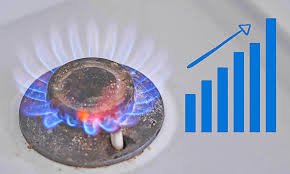As the UK heads into another heating season, households are once again facing uncertainty over energy costs. Despite the Ofgem price cap providing some stability, global gas market fluctuations continue to shape what millions of families will pay for their energy bills in the coming months.
Industry analysts warn that while prices may appear steady, the wholesale market remains volatile. Even small shifts in gas supply, storage levels, or geopolitical factors can quickly translate into higher household costs. For most consumers, the most effective way to stay protected is through a proactive compare energy prices check before winter demand peaks.
The return of market volatility
Natural gas prices across Europe have been fluctuating since late summer, following supply disruptions and renewed demand from Asia. UK prices remain particularly sensitive to these global trends because around 40% of electricity is still generated using gas-fired power plants.
This dependence means that when wholesale gas costs rise, energy suppliers often pass the increases on to customers through variable tariffs. Although the Ofgem price cap limits what suppliers can charge per unit, it does not freeze prices completely. Instead, the cap reflects the underlying wholesale cost averaged over several months.
When wholesale prices rise suddenly, those on fixed tariffs remain shielded, but customers on standard variable tariffs will see the next quarterly cap adjustment reflect those higher costs. With the next review due in January, many experts suggest now is the ideal time to review tariffs through a dual fuel energy comparison.
How gas price changes reach households
The UK’s energy market operates with a lag between wholesale movements and consumer prices. Ofgem’s quarterly cap takes wholesale data from several months before setting new rates. As a result, a surge in gas prices in autumn could push bills higher by spring, even if costs fall again later.
According to Cornwall Insight, wholesale gas costs for winter 2025 remain about 60% above pre-crisis averages. While prices are far lower than the peaks seen in 2022, they are still vulnerable to global supply risks, storage shortages, and cold weather across Europe.
For the average home on a dual fuel tariff, this volatility can make budgeting difficult. Some months may bring lower unit rates, while the next quarter could rise sharply. Fixed deals, however, provide certainty for up to 12 or 24 months — which is why comparing energy prices regularly remains a key strategy for households trying to plan ahead.
Why fixed tariffs may return in 2025
After nearly two years of limited fixed-rate deals, competition between suppliers is starting to return. New entrants and smaller energy providers are launching tariffs that undercut the current price cap by around 5–10%. These fixed offers allow consumers to lock in their rates before potential rises in 2026.
Energy consultants note that most of these deals are now available only online and often require direct debit payments. They also vary regionally, meaning households in areas with higher network costs could still pay more. This makes a compare energy prices search particularly valuable, as it highlights offers based on postcode and consumption levels.
For those who prefer to keep both gas and electricity with one supplier, a dual fuel energy comparison often delivers additional savings. Suppliers frequently provide discounts or simpler billing for customers who consolidate both fuels under one tariff. Reviewing options like stream energy gas rates georgia can help households identify bundled plans that offer better overall value. By comparing multiple providers, consumers can find a convenient and cost-effective solution that simplifies their monthly energy.
Understanding the risks of waiting
Many consumers remain hesitant to switch due to uncertainty about future price movements. However, waiting for prices to fall can sometimes lead to higher costs later. If wholesale gas markets tighten in early winter, suppliers may quickly withdraw their cheapest fixed offers.
Historically, fixed tariffs have proven to be more stable than relying on the quarterly cap, particularly during times of volatility. Even if a fixed deal is only slightly below the current cap, it can still offer protection against sudden spikes that occur with cold snaps or supply interruptions.
Analysts from Aurora Energy Research suggest that UK households could see another round of modest price cap increases in 2026 unless wholesale markets stabilise. Acting early gives households greater control and helps avoid being caught in higher caps that reflect past wholesale surges.
The role of household efficiency
While switching tariffs helps reduce unit costs, overall energy usage remains another major factor in household spending. Improving insulation, reducing standby power consumption, and upgrading to energy-efficient appliances can all help keep bills manageable.
Government data shows that an average semi-detached home could save around £250 a year by implementing basic energy-saving measures such as draught-proofing, thermostat control, and LED lighting. Combined with a lower tariff from a comparison check, these changes can make a noticeable difference to total yearly energy bills.
Wider market outlook
The UK energy market continues to evolve as suppliers compete on greener tariffs and technology-driven solutions. Many providers now integrate renewable energy sources or offer smart meters that track real-time usage. Ofgem’s ongoing reforms also aim to make switching faster, with automatic transfer times now under five working days for most customers.
Despite this progress, experts warn that volatility will remain a key feature of the global gas market for years to come. Even as renewable generation expands, the UK’s reliance on imported gas during cold months means households will always be exposed to international price shifts.
Consumers who stay informed, compare regularly, and make use of available fixed or low-standing-charge deals will be best placed to keep their costs under control.
Key takeaway
Gas price fluctuations continue to shape the UK’s energy outlook. With uncertainty ahead, households should not wait for the next cap update. By using trusted tools to compare energy prices, running a dual fuel energy comparison, and monitoring their energy bills regularly, families can secure protection from rising costs and avoid being caught out by another period of volatility this winter.









